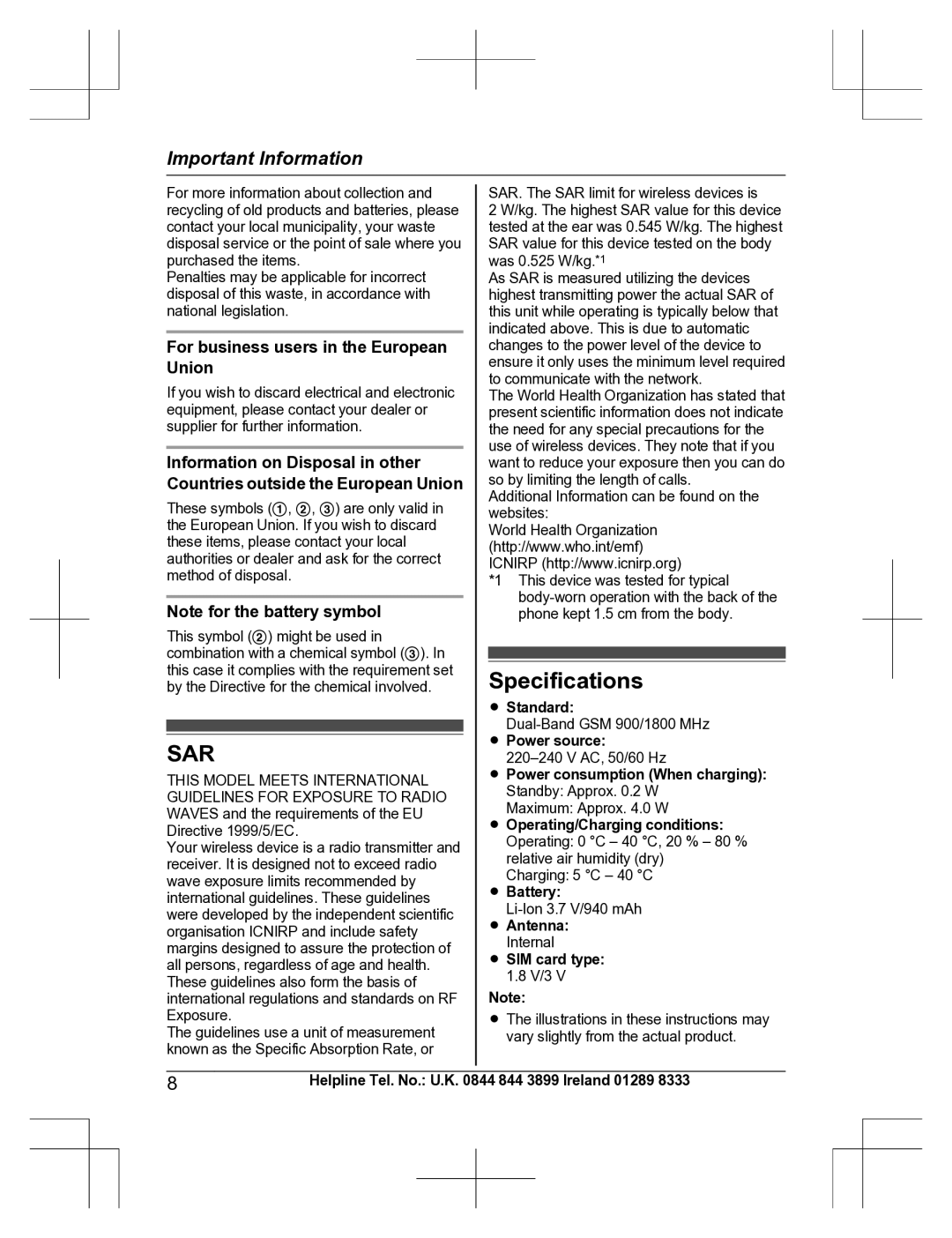
Important Information
For more information about collection and recycling of old products and batteries, please contact your local municipality, your waste disposal service or the point of sale where you purchased the items.
Penalties may be applicable for incorrect disposal of this waste, in accordance with national legislation.
For business users in the European Union
If you wish to discard electrical and electronic equipment, please contact your dealer or supplier for further information.
Information on Disposal in other Countries outside the European Union
These symbols (A, B, C) are only valid in the European Union. If you wish to discard these items, please contact your local authorities or dealer and ask for the correct method of disposal.
Note for the battery symbol
This symbol (B) might be used in combination with a chemical symbol (C). In this case it complies with the requirement set by the Directive for the chemical involved.
SAR
THIS MODEL MEETS INTERNATIONAL GUIDELINES FOR EXPOSURE TO RADIO WAVES and the requirements of the EU Directive 1999/5/EC.
Your wireless device is a radio transmitter and receiver. It is designed not to exceed radio wave exposure limits recommended by international guidelines. These guidelines were developed by the independent scientific organisation ICNIRP and include safety margins designed to assure the protection of all persons, regardless of age and health. These guidelines also form the basis of international regulations and standards on RF Exposure.
The guidelines use a unit of measurement known as the Specific Absorption Rate, or
SAR. The SAR limit for wireless devices is
2 W/kg. The highest SAR value for this device tested at the ear was 0.545 W/kg. The highest SAR value for this device tested on the body was 0.525 W/kg.*1
As SAR is measured utilizing the devices highest transmitting power the actual SAR of this unit while operating is typically below that indicated above. This is due to automatic changes to the power level of the device to ensure it only uses the minimum level required to communicate with the network.
The World Health Organization has stated that present scientific information does not indicate the need for any special precautions for the use of wireless devices. They note that if you want to reduce your exposure then you can do so by limiting the length of calls.
Additional Information can be found on the websites:
World Health Organization (http://www.who.int/emf) ICNIRP (http://www.icnirp.org)
*1 This device was tested for typical
Specifications
RStandard:
RPower source:
RPower consumption (When charging): Standby: Approx. 0.2 W
Maximum: Approx. 4.0 W
ROperating/Charging conditions: Operating: 0 °C – 40 °C, 20 % – 80 % relative air humidity (dry)
Charging: 5 °C – 40 °C
RBattery:
RAntenna: Internal
RSIM card type: 1.8 V/3 V
Note:
RThe illustrations in these instructions may vary slightly from the actual product.
8 | Helpline Tel. No.: U.K. 0844 844 3899 Ireland 01289 8333 |
